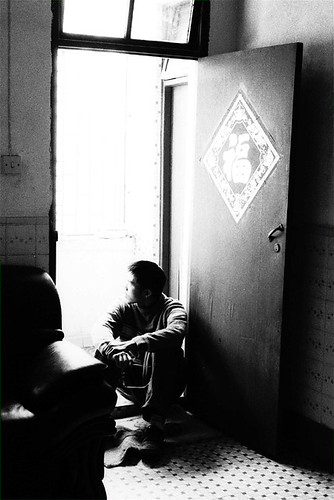 by Heather Carter, Youth Suicide Prevention Program
by Heather Carter, Youth Suicide Prevention ProgramIn April, 1995, a boy who identified as bisexual and two of his friends were viciously assaulted by four classmates. The assault sent this boy into a depression that required hospitalization. Soon after, he took a massive overdose of pills and died. He didn't leave a suicide note, but he had said to his mother before he was hospitalized that he was just tired of coping. It was the constant knowledge that at any time he could be attacked again simply because of who he was, that at any time his friends could be attacked for the same reason, that, despite the love of his family and friends, all he could see ahead was a lifetime of facing a world filled with hate and violence, going from one assault to another. He was 17 years old. (Provided by Gabi Clayton)
This is just one example of the pain, despair, and suicidal thoughts that GLBTQ (gay, lesbian, bisexual, transgender, and questioning) youth may face due to issues related to their sexual orientation and/or gender identity. There is a need to focus on GLBTQ youth and suicide because of their increased risk for suicidal behaviors due (in part) to feelings of isolation, homophobia, (real or fear of) rejection by family and friends, internal conflict, and their coming out experiences.
- Approximately 30% of GLB youth report at least one suicide attempt within the past year. (Data from 7 different national studies conducted within the past 10 years)
- GLB youth report lower levels of each of the following “protective factors” against suicide: adult caring (including teachers and others), family connectedness, and school safety. The conclusion of this study was that sexual orientation alone accounted for a small portion of the variability in suicidal ideation and attempts, if protective factors were improved among the GLB population that the suicide risk would decrease significantly. (Eisenberg & Resnick. Suicidality among gay, Lesbian, and Bisexual Youth-The Role of Protective Factors. 2006)
The data are clear: if protective factors such as these and access to safe and effective care were present, the suicide risk among the GLBT population would decrease significantly. I believe that we have a responsibility to help build a safety net for all youth. I believe that we have a responsibility to give all youth hope, including the hope to be accepted for who they are.
We must increase community support for our youth so they can grow and flourish as they transition into adulthood.
We welcome outspoken supporters from all communities to align with us for the sake of our children. Please contact the following with any questions about our GLBTQ youth project:
Heather Carter
GLBTQ Project Coordinator
Youth Suicide Prevention Program
Phone: 206-297-5922 Ext. 116
Heather (at) yspp (dot) org
Thanks to alien-paranoia for the Creative Commons photo.



No comments:
Post a Comment